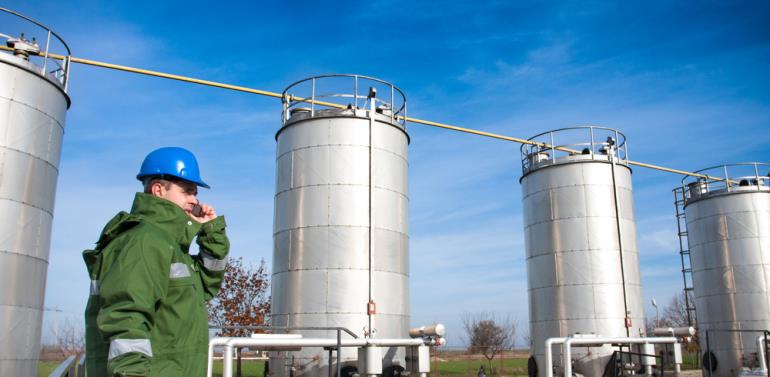International
Moody’s places Energy and Metals & Mining issuers on review for downgrade

Moody’s Investors Service has placed the ratings of 120 oil & gas companies and 55 mining companies on review for downgrade. These reviews reflect a mix of declining prices that are near multi-year lows, weakening demand and a prolonged period of oversupply that will continue to significantly stress the credit profiles of companies in these sectors.
The actions also reflect Moody’s effort to recalibrate the ratings in the oil & gas and mining & metals portfolios to align with the fundamental shifts in the credit conditions of these sectors.
Oil prices have deteriorated substantially in the past few weeks and have reached nominal price lows not seen in more than a decade. Moody’s has adjusted its view downward for the likely range of prices. We see a substantial risk that prices may recover much more slowly over the medium term than many companies expect, as well as a risk that prices might fall further. Even under a scenario with a modest recovery from current prices, producing companies and the drillers and service companies that support them will experience rising financial stress with much lower cash flows.
The review for downgrade also considers that much weaker industry fundamentals have the potential to warrant rating changes for all the companies. While the review focuses on companies rated in the range from A1 to B3, Moody’s is also re-evaluating higher and lower rated companies in the context of industry conditions. The higher rated companies on average are somewhat more resilient to low oil prices and Moody’s has recently downgraded many of the lower rated companies.
As part of its on-going assessment of energy markets, Moody’s sharply reduced its oil price assumptions on January 21 in light of continuing oversupply in the global oil markets and demand growth that remains tepid. Iran is poised to add more than 500,000 barrels per day to global supply while OPEC and many non-OPEC oil producers continue to produce without restraint as they battle for market share. The addition of Iranian oil to the market this year will offset or exceed expected declines in US production of about 500,000 barrels per day. Increased production vastly exceeds growth in oil consumption, given modest growth in consumption from major consumers such as China, India and the US. Production now exceeds demand by about 2 million barrels per day, adding to already high global oil stocks. Our natural gas and natural gas liquids price assumptions are unchanged. Natural gas production in the US continues to increase while costs decline and producers generate cash returns at ever-lower prices, although in many cases these appear insufficient to service their debt.
Lower oil prices will further weaken cash flows for E&P companies and the upstream portion of integrated oil and gas companies. This will cause further deterioration in financial ratios, including deeper negative free cash flow. Most companies are unable to internally fund sustaining levels of capital spending at current market prices. Current industry conditions also reduce the value of assets offered for sale and have made accessing capital markets more expensive for some companies and unavailable for others. While integrated oil and gas companies benefit from the profitability of their downstream operations, the upstream operations represent a much larger part of the capital employed and cash flow for most of these companies.
Projected capex reductions by E&P and integrated oil companies will severely challenge the drilling and oilfield services (OFS) sector beyond what it had already experienced in 2015. Moody’s expects OFS sector EBITDA to drop by another 25 per cent-30 per cent in 2016, testing the viability of the capital structures of many of these businesses. Even if commodity prices recover, OFS companies are unlikely to gain any pricing power because of the continued excess capacity across most OFS subsectors. As a result, Moody’s expects credit quality to deteriorate for all OFS players in 2016. Smaller and more leveraged OFS companies in particular will struggle to comply with debt agreement covenants, service their debt and access the capital markets, raising their risk of default. Even large, diversified investment grade OFS companies will have less financial flexibility and increasing financial leverage. Drillers with significant contract expirations will also suffer material credit degradation as contracts are either not renewed or are renewed at rates that produce far less revenue.
Although all issuers in these sectors have been adversely affected by declining prices, severity varies substantially by issuer. Accordingly, the range of possible outcomes upon conclusion of the review for given issuers varies from possible confirmation of ratings to multi-notch downgrades. Multi-notch downgrades are particularly likely among issuers whose activities are centred in North America, where natural gas prices have declined dramatically along with oil prices. Moody’s expects to conclude a majority of the reviews by the end of the first quarter.
-

 Alamaliktistaad Magazines2 months ago
Alamaliktistaad Magazines2 months agoAlam Al Iktisaad – September 2025 Edition
-

 News2 months ago
News2 months agoKitchenomiKs Secures Investment of US$3.2M Led by Jasoor Ventures
-

 Banking & Finance2 months ago
Banking & Finance2 months agoOman Arab Bank Highlights Its Ongoing Strategic Initiatives and Future Plans
-

 News2 months ago
News2 months agoIEA Expects Global Oil Market to Remain Oversupplied in 2026
-

 Energy2 months ago
Energy2 months agoWLGA Middle East LPG Summit & Expo 2025 to be held at OCEC on November 10 and 11
-

 Real Estate2 months ago
Real Estate2 months agoAl Mouj Muscat Unveils Azura Beach Residences Phase 2: A New Chapter in Waterfront Living
-

 Leaders Speak1 month ago
Leaders Speak1 month agoDhofar International Development and Investment Company: Driving Sustainable Growth and Strategic Synergies in Oman’s Investment Landscape
-

 Events1 month ago
Events1 month agoOER Corporate Excellence Awards 2025 Honours Entities and Innovations in Oman































You must be logged in to post a comment Login